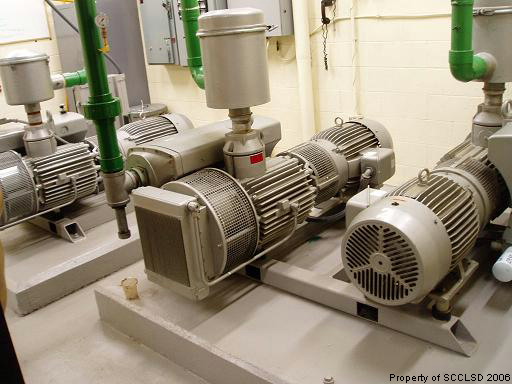Vacuum Pump Stations
The most important pieces of equipment are the vacuum pumps. There are three vacuum pumps at each station.

Usually one vacuum pump is needed for normal operation. These pumps are alternated as the lead pump and the others are used as lag pumps, when one pump cannot keep enough vacuum on the system. This only happens when something is wrong, like a "hung valve". We will get into this later. The vacuum pumps evacuate the air in the lines causing the "vacuum", or negative air pressure. Vacuum sewers do not suck sewage out as we might think. Actually vacuum sewers operate on a pressure differential within the sewer lines. A higher air pressure on one side of the sewage wants to equalize with the lower, actually negative, air pressure on the other side. It ends up pushing the sewage up, around, over, out of its way. The sewage, even in a vacuum sewer line still flows using gravity. (See the "WHERE DOES MY SEWAGE GO?" tour for more about how the collection system works.) The vacuum pumps do not suck any sewage and would be damaged if they did, they only remove the air in the sewer lines to keep a negative pressure on the system. Under normal operating conditions, the system has somewhere between 16 and 20 inches of mercury vacuum.